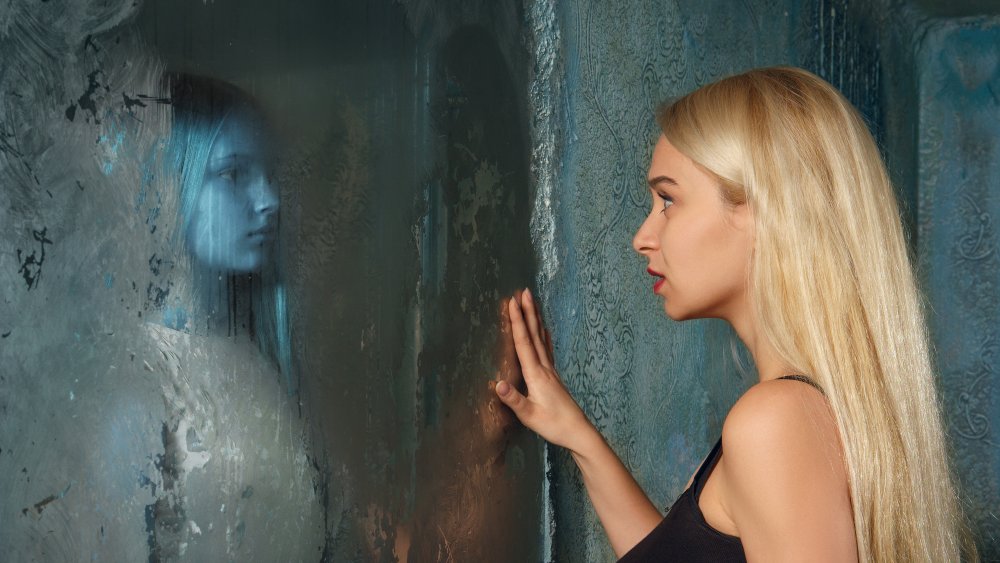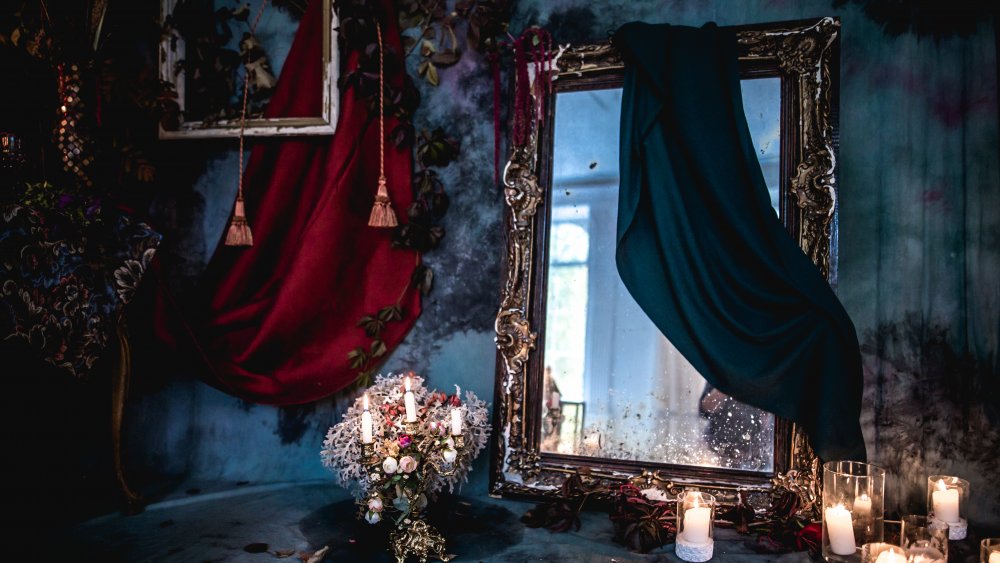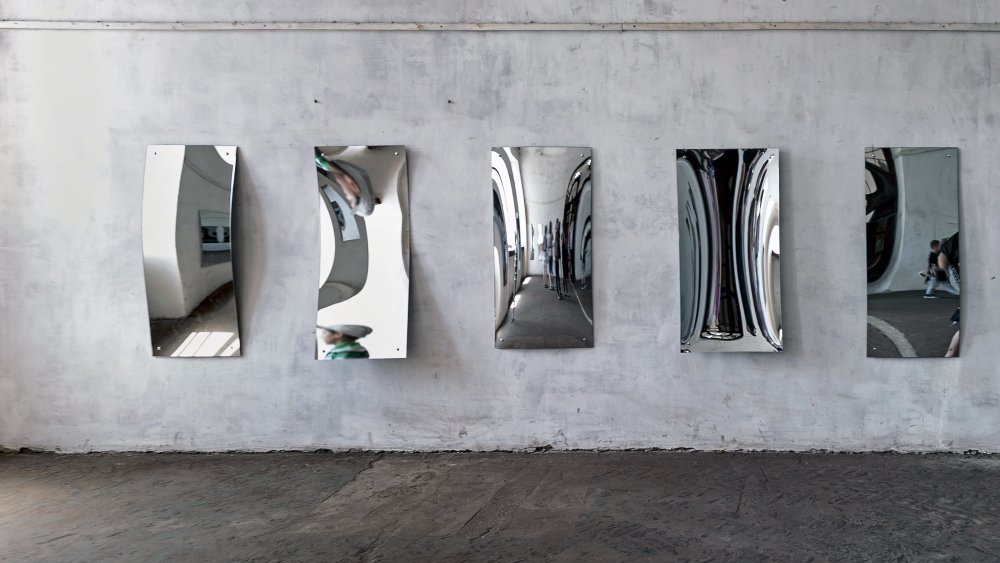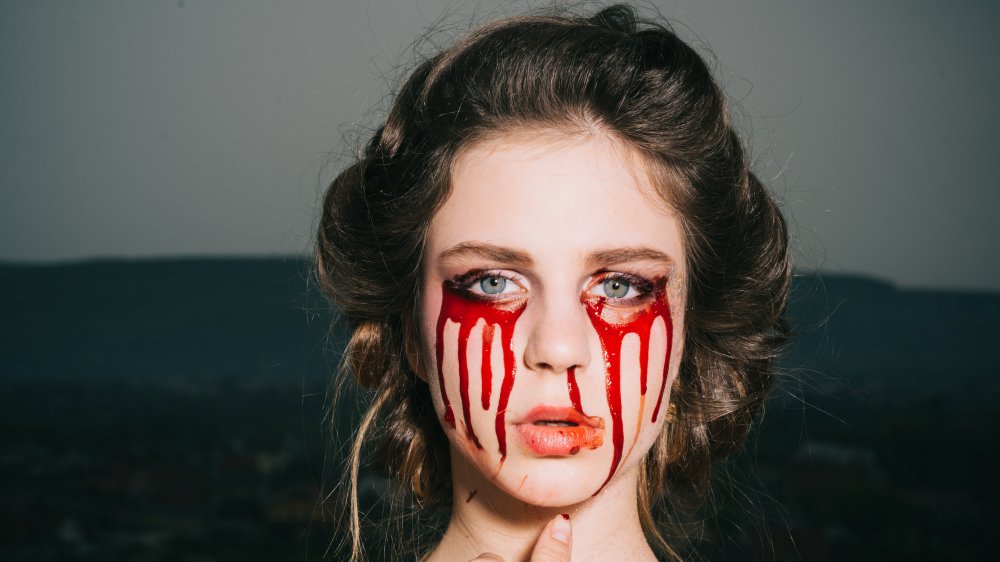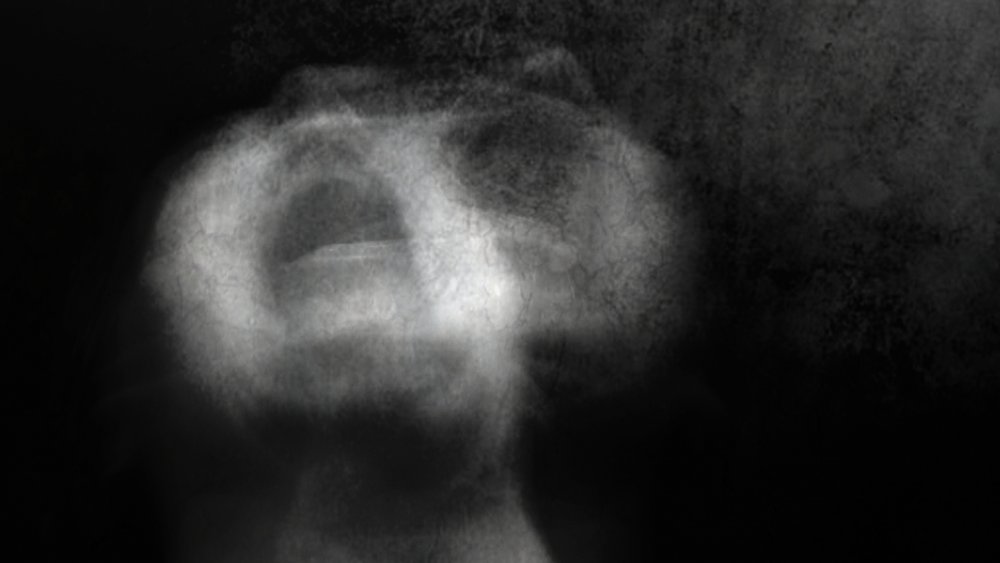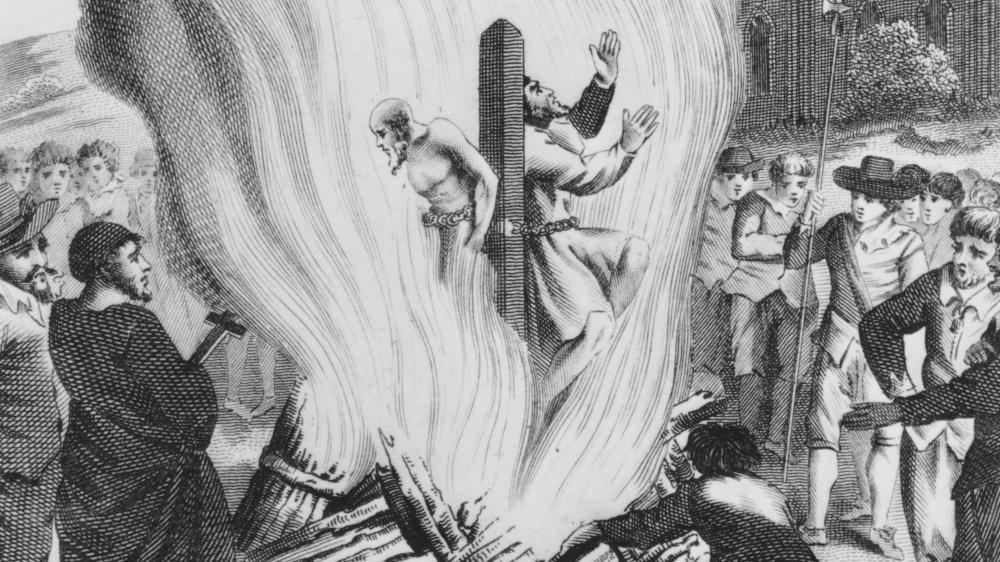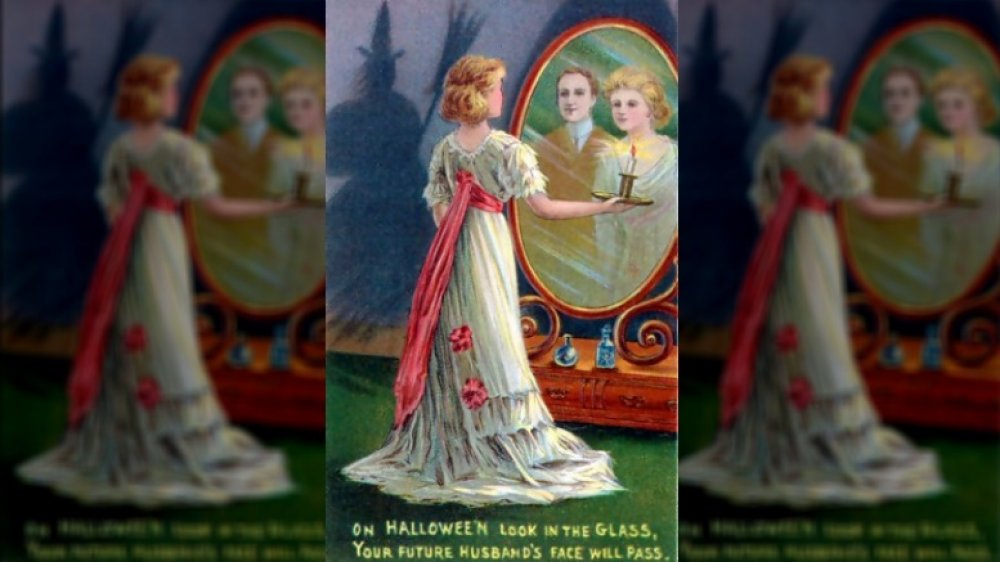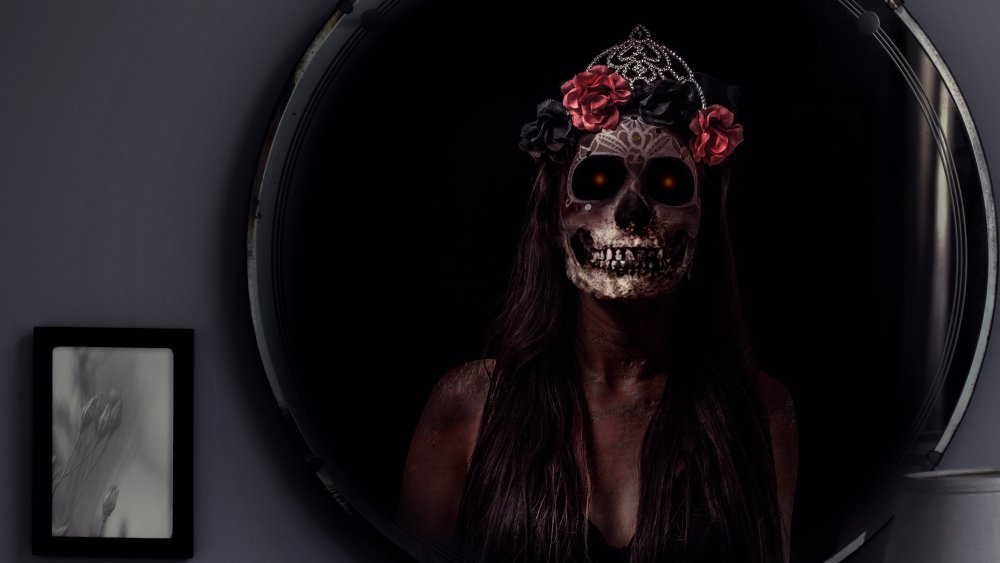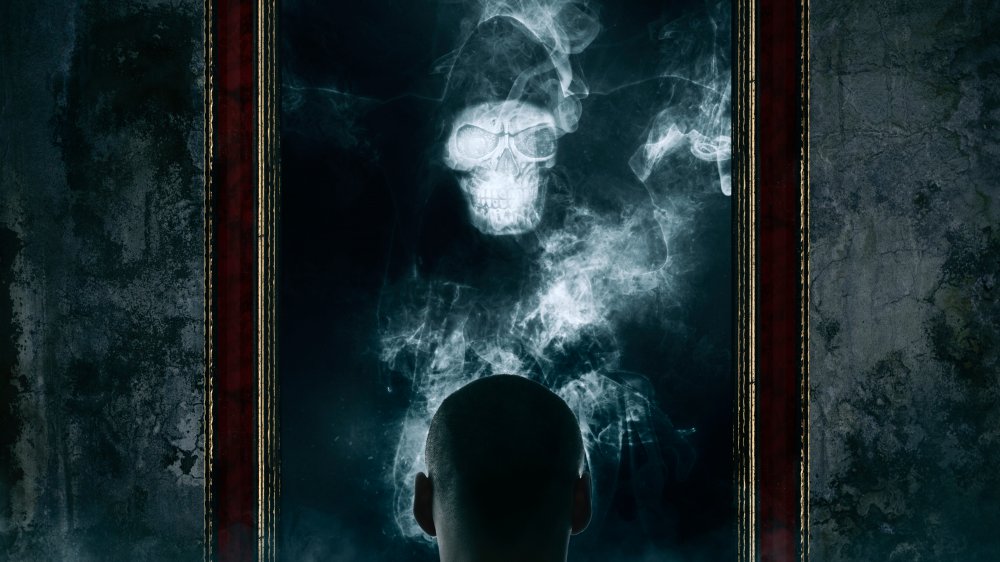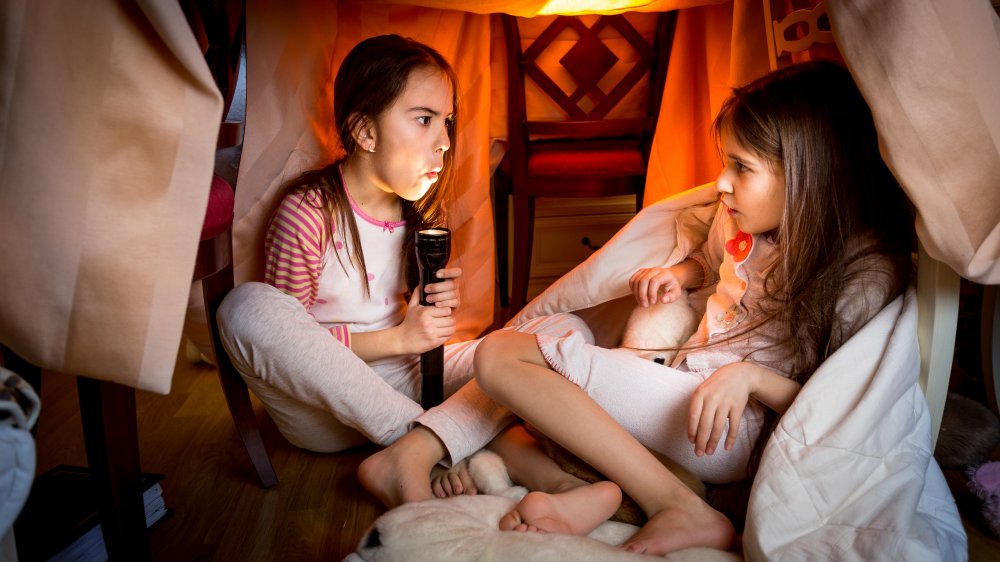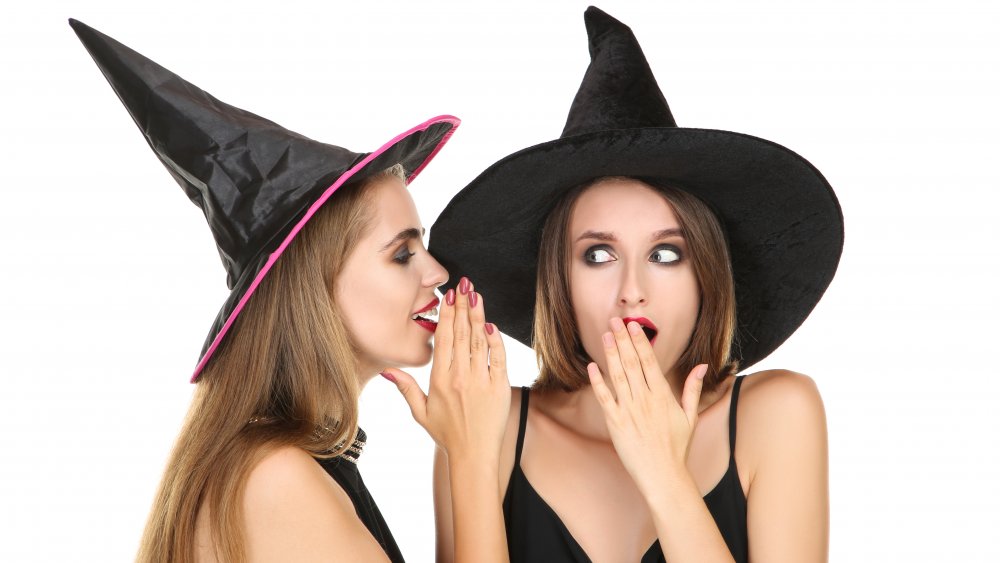The Legend Of Bloody Mary Explained
Everyone loves a good scary story. There are campfire stories, best told outside in the dark, real-life horrors, best heard from a Netflix binge of Investigation Discovery shows, even classic ghost tales, passed down through the centuries but still effective. But alongside all of these exists a specific kind spook story: the urban legend.
Also known as folklore, these are, of course, the stories you hear from someone who heard it from someone else that it totally happened, 100 percent, for-real. Since the dawn of the internet, these stories have taken on new life with social media to spread them and a few quick searches to debunk them.
But some of the most fascinating ones are the classics that have existed for generations. These tend to go through so many permutations and changes over time, giving them their own sort of timeline. Maybe you heard of Bloody Mary from kids at school when you were young, but how much do you really know about this timeless legend?
The OG version of Bloody Mary is simple
With Bloody Mary, sometimes there's a backstory, but it's not really important. What matters is the ritual. You probably heard it at a sleepover at a friend's house when you were little, and it's simple to remember because it's not super complicated. It's easy to share with other unsuspecting kids who have never heard it for exactly the same reason. It's like a really basic meme that makes you laugh so you send it to everyone you know, except scary.
First, you need a dark room and a mirror, according to Snopes. Bathrooms are the most commonly used, since they tend to not have windows, or at least not very big ones, but there's no hard and fast rule that it has to be in the same room as your toilet. Though, admittedly, it might be handy to have the toilet near-at-hand if you end up getting too scared.
When the lights are off and you're in front of the mirror, you merely need to say "Bloody Mary" three times. The multiple repetitions are presumably so that you have a chance to chicken out before plunging headlong into terror. After the third time, simply wait, and something terribly spooky will happen (or probably nothing will happen, but just stick with us here).
But wait, there's more
The "something terribly spooky?" It seems to vary a lot. You might see an evil figure standing behind you. Some tellings say that Bloody Mary herself appears and scratches you, either to injure you or to leave you marked with her curse, which will cause bad things to befall you. According to Snopes, there's even versions that say Bloody Mary will outright kill you, if you like to add a little edge to your sleepovers.
What's more, the number of times you say the name can vary. Some legends say seven times, and a few even say 13 times, by which point you're probably super tired of saying it and the words have lost all meaning to you, so you might forget what you're doing by number 13 and get extra scared by her. That's a pretty cruel trick, Bloody Mary. It's not a telephone call you can just ignore, you're a ghost or a witch or something, you have a job to do.
You may not even need a dark room. Some tellings say that she wants a lit candle or two flickering before Bloody Mary will swing by for a visit. While this may seem like a purely atmospheric thing, there might be more to it. More on that later.
What's in a name?
But wait, you might not even need to call her Bloody Mary. Some variations out there have different names, like Mary Worth (not related to the comic strip of the same name, hopefully), Mary Worthington, Mary Johnson, basically any Mary plus last name combo is on the table. Then there are others that say you need to call her Bloody Bones or Hell Mary, according to Snopes. There are even versions where she's called Black Agnes, Black Aggie, or, strangely, Svarte Madame (which seems to be derived from "svarta madam," Swedish for "woman in black").
Occasionally, you have to say more than just a supernatural being's name. In some versions, you have to say, "I believe in Bloody Mary," or the exact opposite of that, "I don't believe in Bloody Mary." You can, of course, substitute any other of the various names in there. In one take on the story, you're instead supposed to say, "Kathy, come out!" Maybe Kathy/Bloody Mary has been in the bathroom on the other side of the mirror for too long?
Some even get real dark. For example, there's one particularly gruesome variation where you have to say, "Bloody Mary! I killed your baby!" Maybe don't taunt the supernatural being with false murder confessions like this. Just seems like a bad idea all around.
Bloody Mary has regional twists
Much like the menu at McDonald's, Bloody Mary has regional variants, too. These are often adaptations of existing local legends, but adjusted to fit into the dark room, mirror, and chant ritual, according to Folklore Thursday. For example, near the Mexican border, you can find versions of the story starring La Llorona — the weeping woman searching for her lost child.
Another example is found primarily in Tennessee, where you're meant to say "Bell Witch" or "I hate the Bell Witch" instead. This is based on a legend from Adams, TN, where a farmer named John Bell (who was a real person) and his family were allegedly cursed by a neighboring witch, Kate Batts, over a dispute of some kind. If the name sounds kind of familiar, you might be thinking of the Blair Witch, who was inspired by the Bell Witch legend.
Horror author Clive Barker played with this idea in his story, "The Forbidden," which was later adapted into 1992's Candyman. Candyman himself is summoned the same way as other legends like Bloody Mary. Main character Helen, a folklorist, is exploring this local variant for a thesis paper when she inadvertently discovers that this version is actually true and the Candyman is real. Of course, this sort of implies that Bloody Mary is actually a variant on Candyman in that universe instead of the other way around, right?
Bloody Mary's got a history
Bloody Mary sometimes gets a tragic backstory. She can be a witch who was put to death for practicing the black arts centuries ago, but the exact time period varies, according to Snopes. Oddly, it seems the most obvious answer (the Salem Witch Trials) is actually not terribly common. Usually, she's given a more local backstory, in a sort of light take on the regional variations of the story.
She's occasionally a woman who maybe didn't die violently, but lost a child, which may be related to the La Llorona variation. This is also where the creepy "Bloody Mary! I killed your baby!" chant seems to come in, too. Certainly, a vengeful ghost would be summoned by someone declaring infanticide. You monster.
But a more modern update, a gritty reboot perhaps, has her being either a very vain woman who spent a long time staring into the mirror, a woman who died in a violent, bloody accident (often automobile related), or both. Curiously, a vain woman dying violently and becoming an angry spirit has some parallels in a Japanese urban legend called kuchi-sake onna, or ripped-mouth woman. The ripped-mouth woman was a beautiful, vain woman who died, usually during a botched plastic surgery attempt, and now walks around Japan with a veil covering her mouth, asking people if they think she's beautiful. No matter what you say, she pulls down the veil, shows her mouth is cut from ear-to-ear, and kills you.
But Bloody Mary is probably not from history
Bloody Mary is sometimes tied to famous figures from history, such as "Bloody" Mary I of England, who reigned in the mid-16th century. While the two do share a nickname, Mary I was not a witch (that we know of), nor did she die violently. And she never had children. She was called Bloody Mary because she had a proclivity for ordering the execution of Protestants, which definitely isn't nice, but doesn't seem to relate her to the legend of Bloody Mary at all, according to Snopes.
Another target for the legend is Mary, Queen of Scots, who reigned over Scotland in the 16th century as well. However, she has even less in common with the folklore figure of Bloody Mary. While she did have a violent death — she was executed by beheading in 1587 — there's not really a whole lot of blood in her story otherwise. It seems more likely that she was roped into the legend just because her name happened to also be Mary.
There are a host of other historical figures the legend is supposedly based on, but these are even more unlikely than Mary I or Mary, Queen of Scots. To put it simply, folklorists and researchers haven't found any strong evidence that the legend is based on a singular historical figure.
Bloody Mary: The Prequel
There is one thing we do know about where the Bloody Mary legend originated from — it bears a striking resemblance to a divination game played by people in centuries past. The way it works may sound extremely familiar. A person stands in front of a mirror in a darkened room, chants a rhyme or phrase, and a spectral vision comes to them, according to Folklore Thursday.
It's pretty much a dead ringer (pun sort of intended) for Bloody Mary, but this game was meant to tell the future instead of summoning a supernatural presence. Specifically, the idea was that young women would do this in hopes of seeing a glimpse of the man they were to marry (which seems incredibly quaint now). If the ritual was performed correctly, a ghostly apparition of the supplicant's one true love would appear before them. But even this proto-Bloody Mary can be spooky. If the person is going to die before getting married, then the ghastly form of the Grim Reaper might appear instead.
While this particular divination game only goes back a few centuries, there are tons of examples throughout literature and history talking about telling the future based on things seen in reflective images. Think of Snow White's evil stepmother and her magic mirror on the wall. Even the Bible, in 1 Corinthians 13 mentions seeing "through a glass darkly," a reference to such practices which existed back then, too, according to LiveAbout.
So how old is Bloody Mary?
We know that people have been trying to see stuff in mirrors for millennia, and we know that similar rituals have been kicking around for a few hundred years, so how old is the Bloody Mary legend? This may surprise you, but Bloody Mary seems to be a bit of ancient folklore stretching back to that far-off time of... the 1970s. The earliest print references to Bloody Mary are only about 50 years old, according to Folklore Thursday.
At best, folklorists can trace the legend back to the post-World War II era. So you had things that vaguely resemble Bloody Mary and similar stories before then, but Bloody Mary herself is a newcomer on the urban legend scene. Those regional variants, like the Bell Witch and La Llorona? Those legends both significantly predate Bloody Mary. They were retrofitted into the Bloody Mary format when that legend became so popular in the latter half of the 1900s.
So, despite being a legend that resembles European ghost stories from centuries ago, Bloody Mary is practically the new kid on the block. The concept of flying saucers, that is, mysterious disc-shaped objects flying through the sky, comes from about the same post-war era as Bloody Mary. If she was a real person, she'd probably still be collecting social security right about now.
Through the looking glass
The most unifying factor of all the Bloody Mary legends and their variants is the mirror. Everything else is negotiable, but the mirror is not. Every version includes it, and without the mirror, it effectively becomes an entirely different legend. A version where you say a ghost's name facing a blank wall would be pretty weird. So what is it about the mirror that's so integral here?
Well, it turns out that seeing scary things in the mirror has been a big deal for a very long time, according to Astonishing Legends. There's no shortage of tales about people seeing a different face in the mirror, or being pulled into the glass to live in the mirror world, where they presumably don't have right-handed scissors or computer mice. What's interesting there, though — and another reason the Bloody Mary myth isn't too terribly old — is because mirrors as we know them weren't even invented until the 1830s.
Obviously, people looked at their own reflection before this time, but they did so in glass, polished metal, or water, which didn't reflect as clearly. This makes them approximately one million times scarier, because you could barely make out your own features, much less those of a ghost behind you. So it seems that mirrors were already scary, even before their official invention, and those fears were brought straight into the Bloody Mary legend.
The official mascot of slumber parties for 50 years
One particular thing that researchers have noted about the Bloody Mary legend is how it spreads. Or, more specifically, who spreads it. While you boys reading this have likely heard the story at one point or another, the Bloody Mary legend is mostly the domain of girls. It is deeply associated with slumber parties (themselves a fairly recent invention) as opposed to, say, being told around the campfire.
So why is the legend so prevalent among budding young women? Well, folklorists have some theories. For one thing, it's related to fears of aging and physical appearance. Try as we might, we still haven't broken the social stigma that women's worth is judged by their beauty. This stress is especially high on young girls, because middle school and high school are a Thunderdome of social pressure. While Bloody Mary herself isn't meant to be a representation of how they'll look when they're older, there's still a lot of fear surrounding unexpected things in the mirror.
However, an even bigger influence seems to come from puberty and, specifically, menstruation, according to LiveAbout. Yes, the "Bloody" part is pretty on-the-nose, but even on a more subtle level, girls are preparing to become adults and that's pretty scary. Summoning an angry spirit with a violent past is a simple way to confront some of the horrors adulthood might one day throw at them.
Bloody Mary is scary because it's simple
Speaking of Bloody Mary's simplicity, that actually has a lot to do with how urban legends spread. Folklorists have found that the urban legends that get spread the furthest are those that are "minimally counterintuitive." What this means is that stories that are almost entirely realistic but just have one small difference are the ones that spread like wildfire. The reason is because they're more memorable. It's hard to remember a legend that gets caught up in details, but for stories like Bloody Mary, the details are mundane stuff we do every day anyway, like go into the bathroom and look in the mirror.
With Bloody Mary, the bathroom, mirror, and so on, are normal, but the supernatural encounter is not. That's the key twist that makes the story, well, viral. It's like how fake news works today. A story that's mostly basic facts and then one big whopper stuffed into it will fly under a lot of people's radar, because their BS detectors aren't tripped enough to make them question it too closely.
Many of the most popular legends throughout history work on this premise, according to Folklore Thursday. Take Bigfoot, for example. There's a strange animal in some isolated woods, which is perfectly plausible. Large primates exist, which we also know to be true. Humans shared a common ancestor with apes. Those things are facts, but Bigfoot is not. Still, it's minimally counterintuitive, and so it's easy to remember and share.
How to see ghosts
So, real talk: Will you see something unexpected in the mirror if you chant a name in the mirror multiple times in a dark room and wait? Actually, yes. Sort of. You don't need the chant, though. Just go into a room with a mirror, turn the lights off, stare into the mirror, and wait. There's an excellent chance you'll see your own face warping and changing or even see what looks like another figure next to or behind you. G-g-g-g-ghosts!!
Not quite, according to Mental Floss. Our brains have this feature called pareidolia, which lets us identify faces where there may not actually be a face. It's useful for spotting predators, but sometimes it glitches out, like with the Face on Mars, where we see a face that isn't really a face. Darkness can mess this up, too. This is an illusion called the Troxler Effect, where staring at the same unchanging thing for a while can cause our brain's view of it to warp.
This effect is actually made stronger with dim, flickering light from a candle, because our eyes dilate to adjust to the lack of light. During this time, things that weren't visible previously, say a pattern on your wallpaper, come into focus slowly and unevenly, and can look like something entirely different. Also, if there is a ghost in the room, it will take you longer to notice it, thus giving you precious seconds before your untimely demise.
